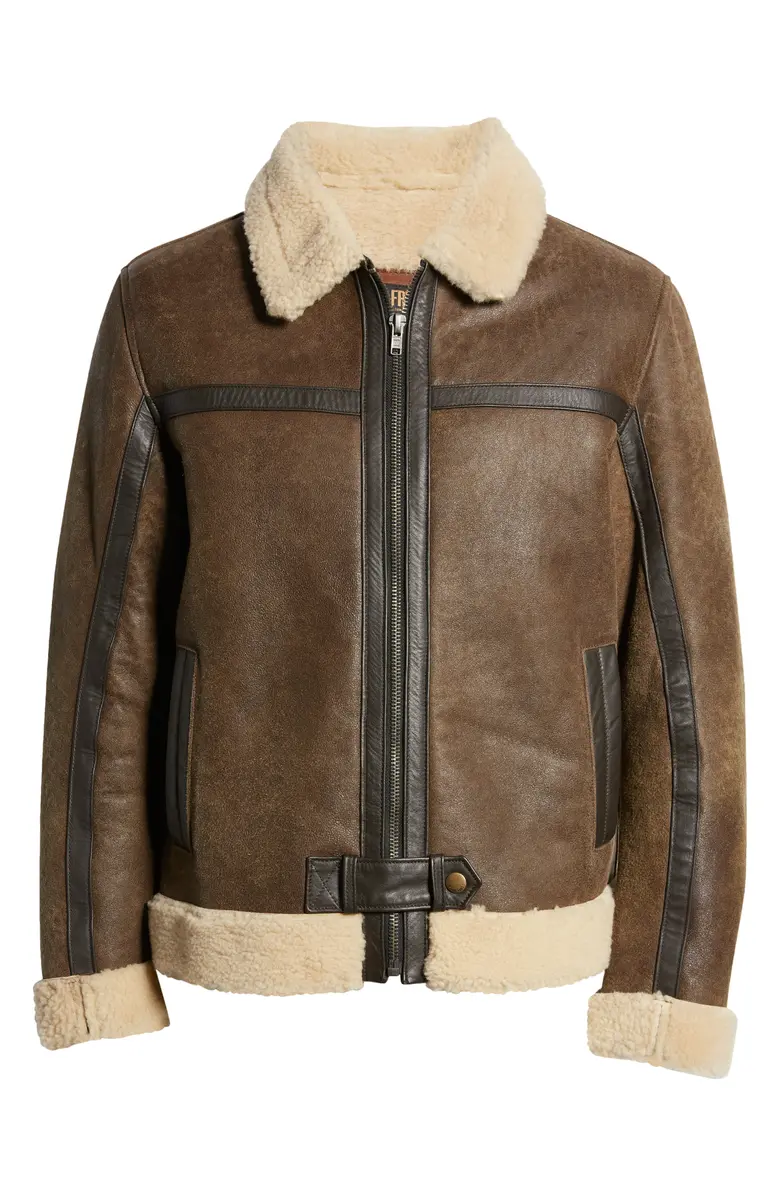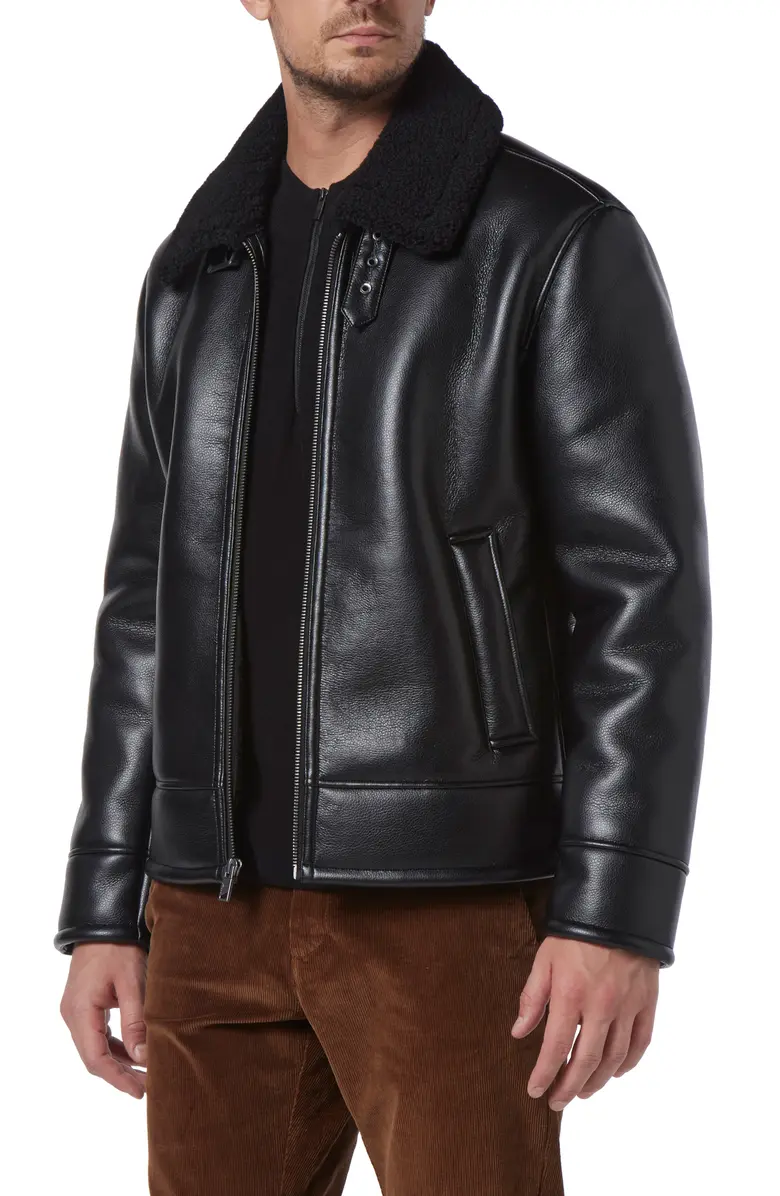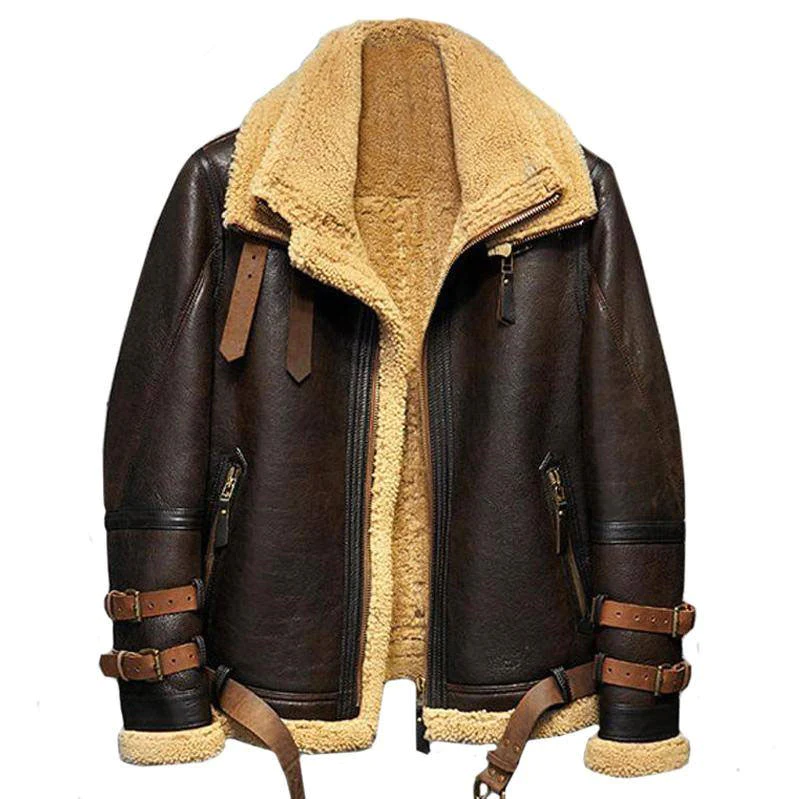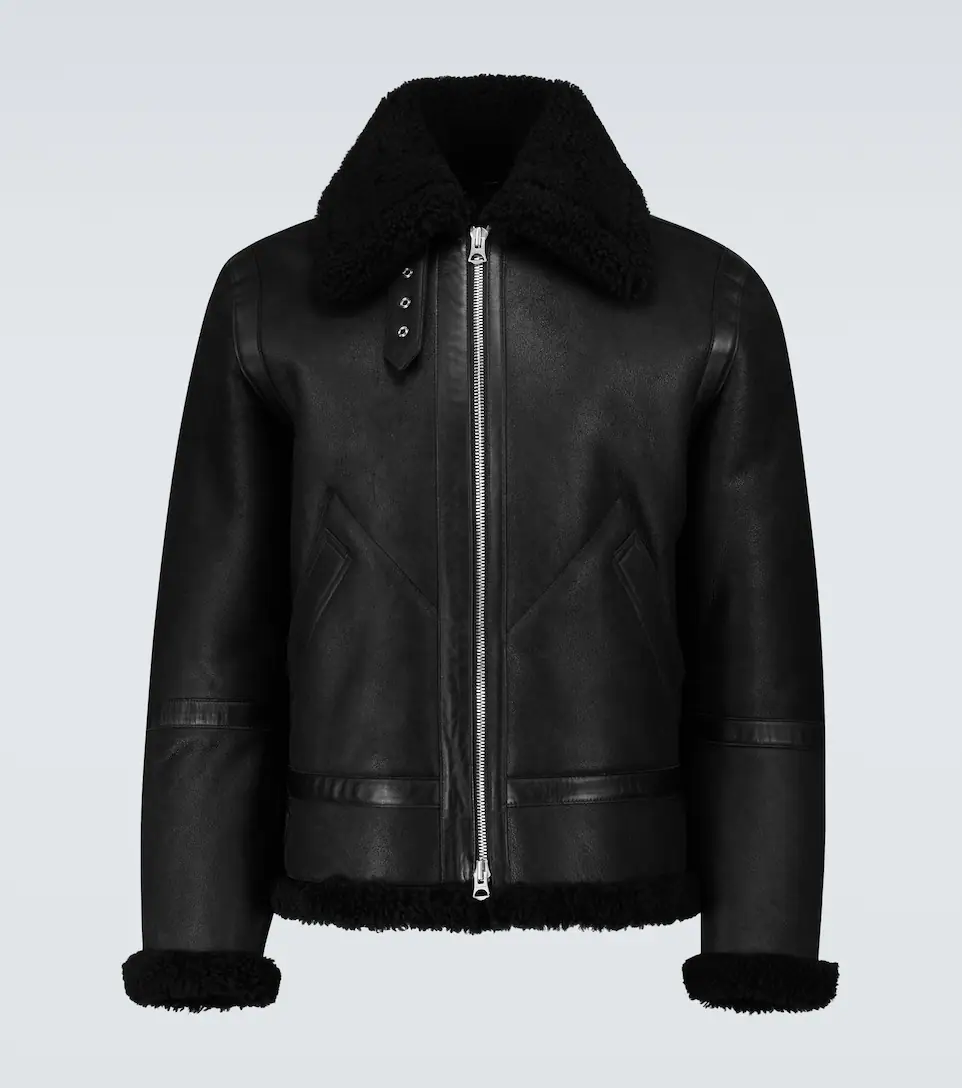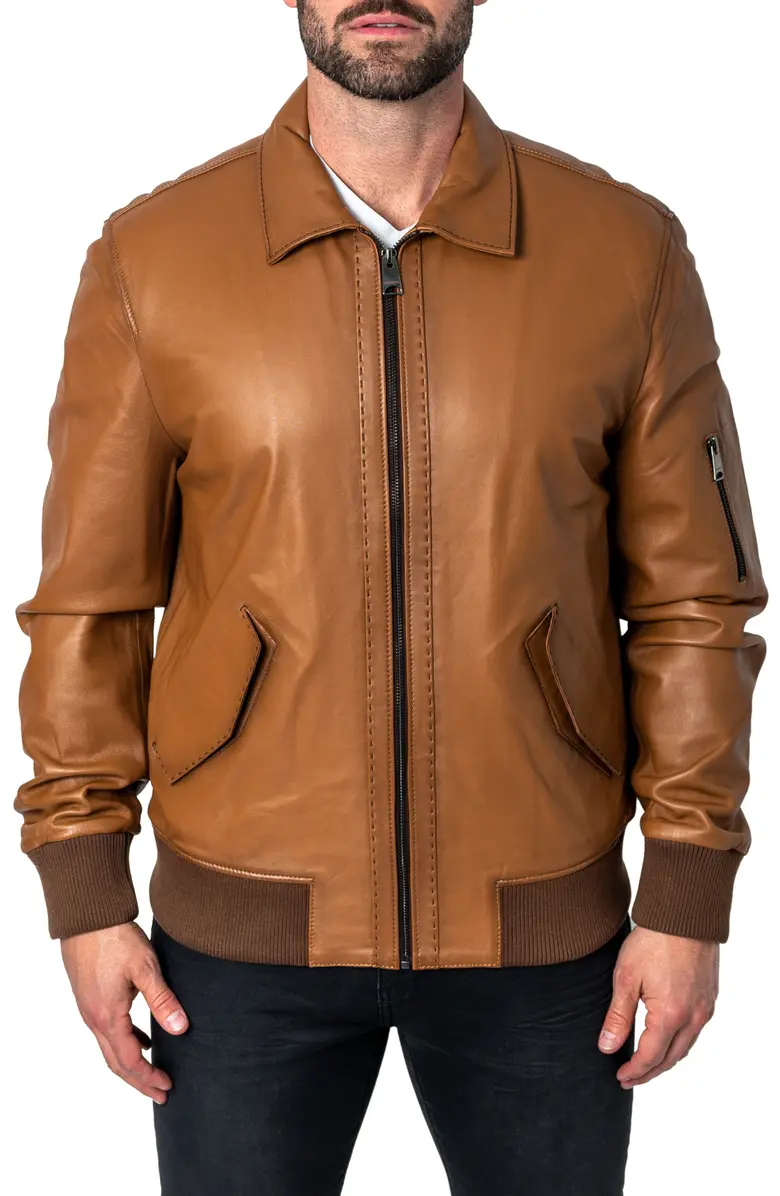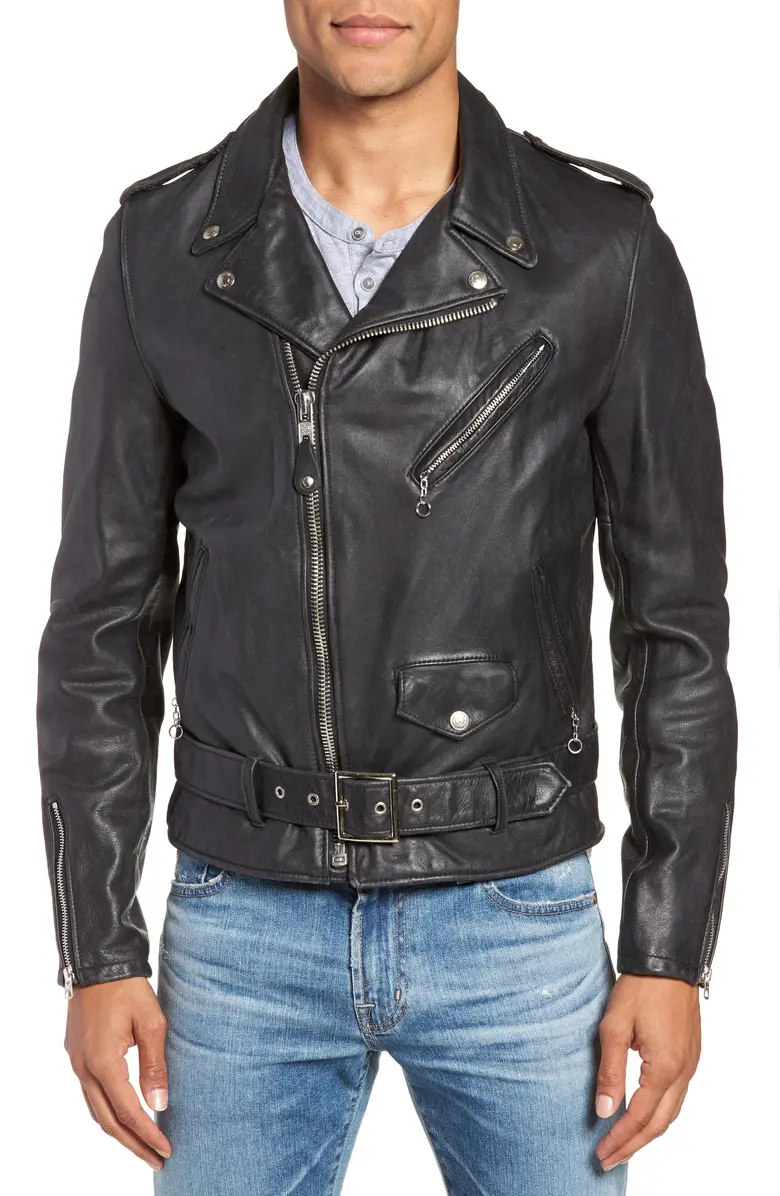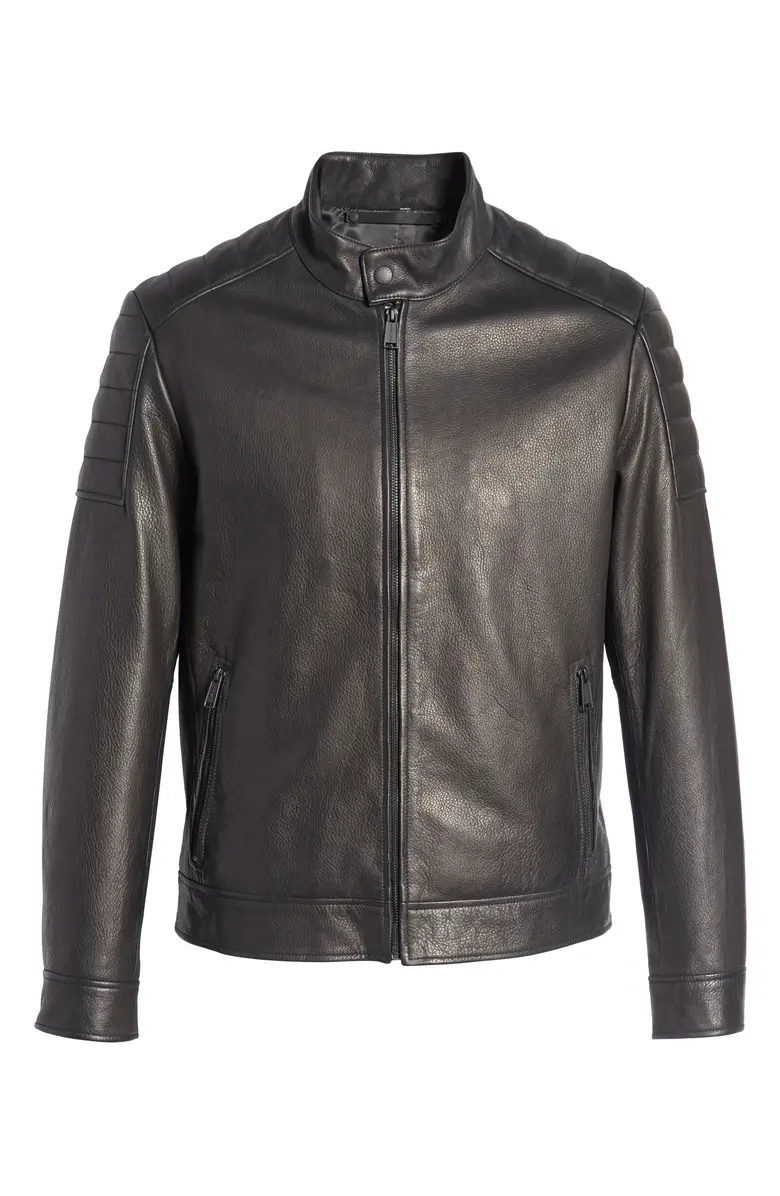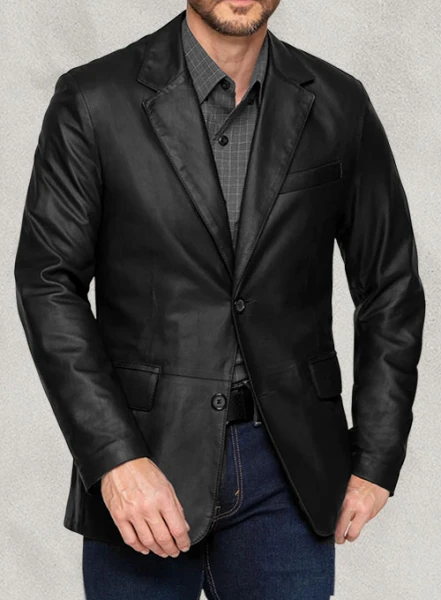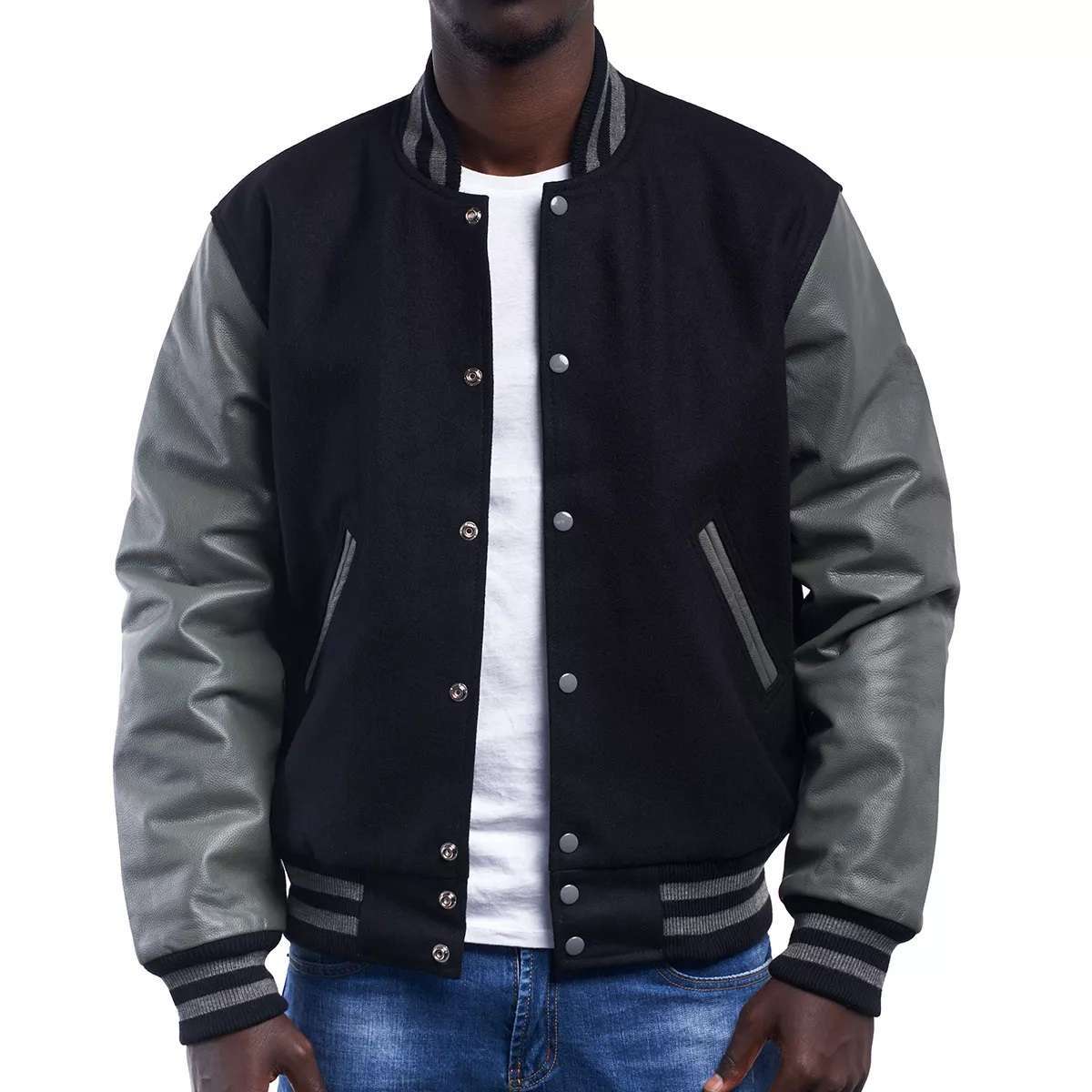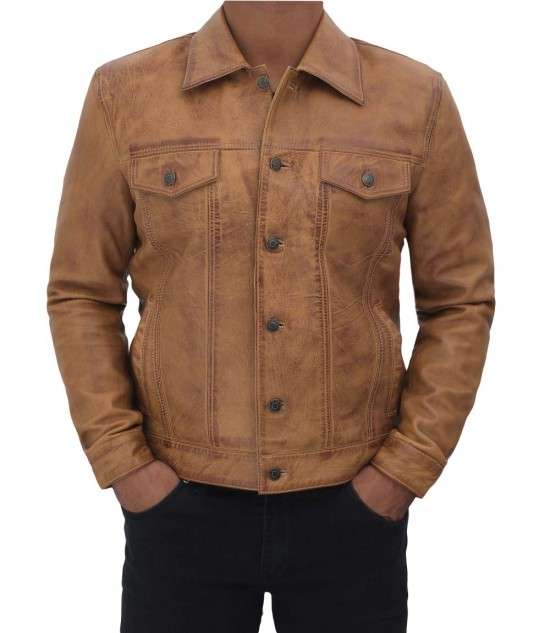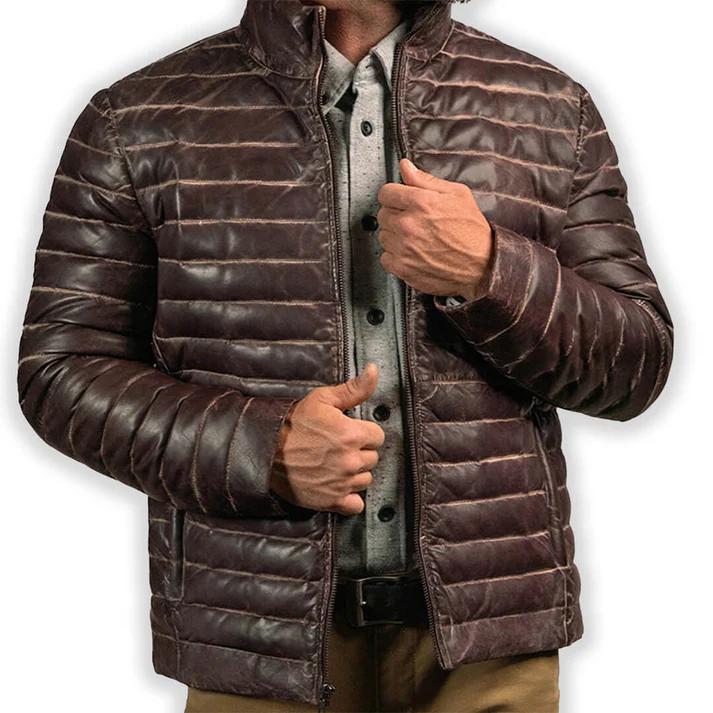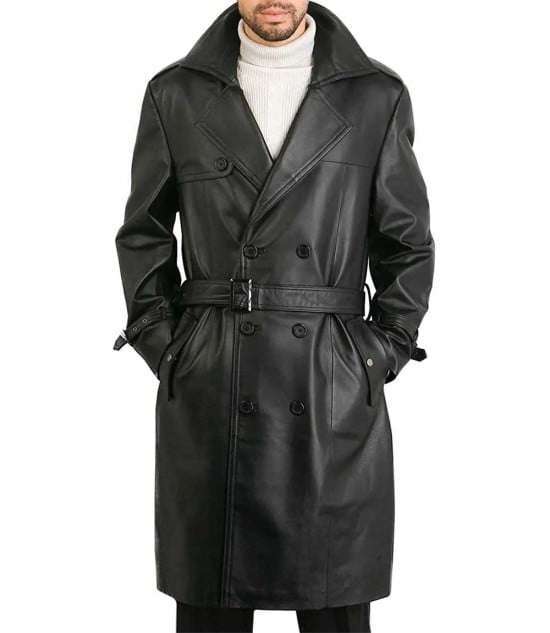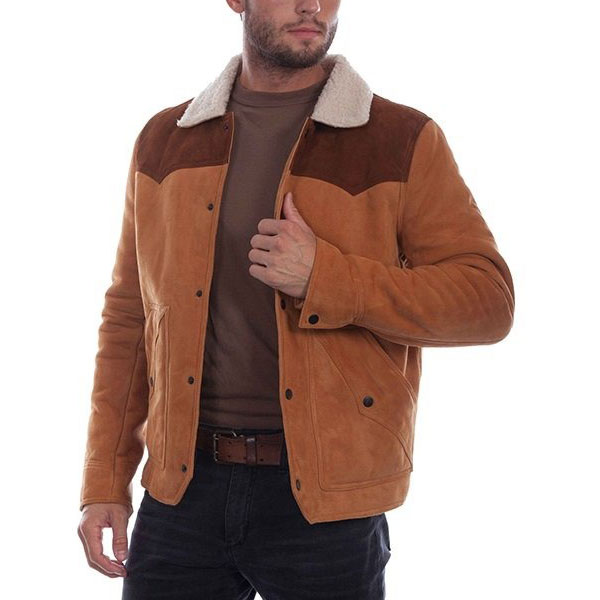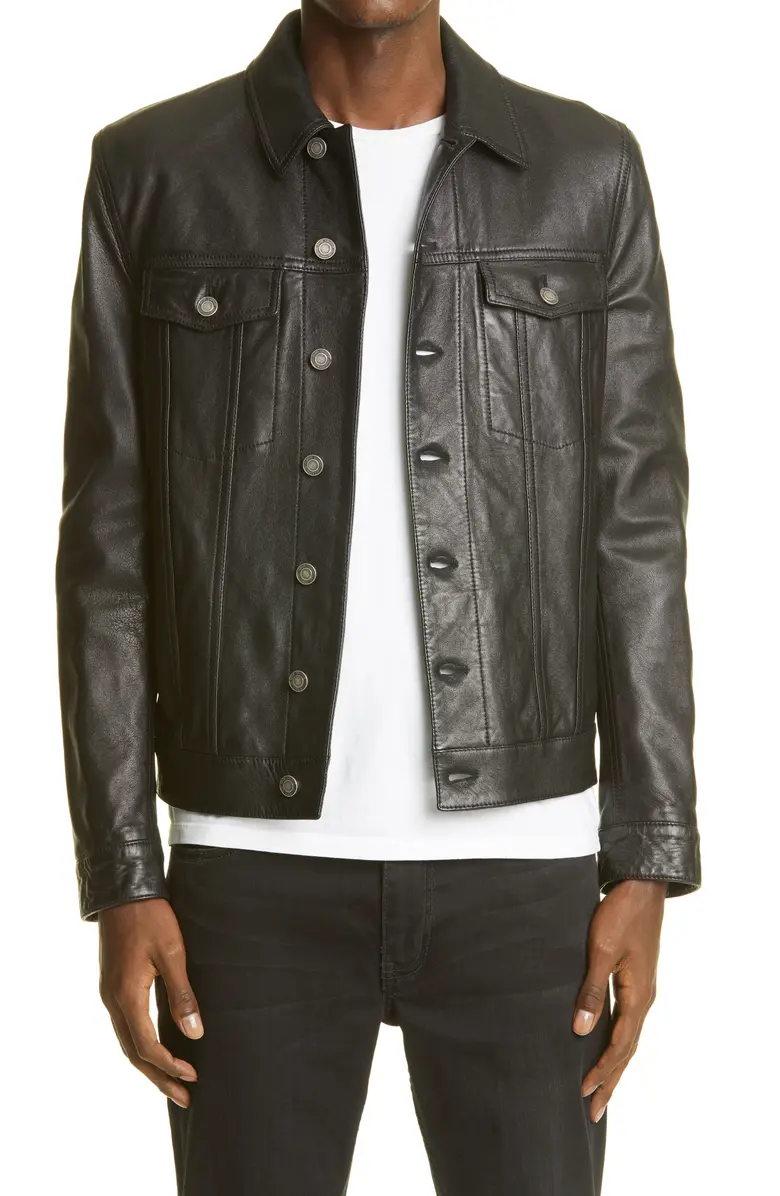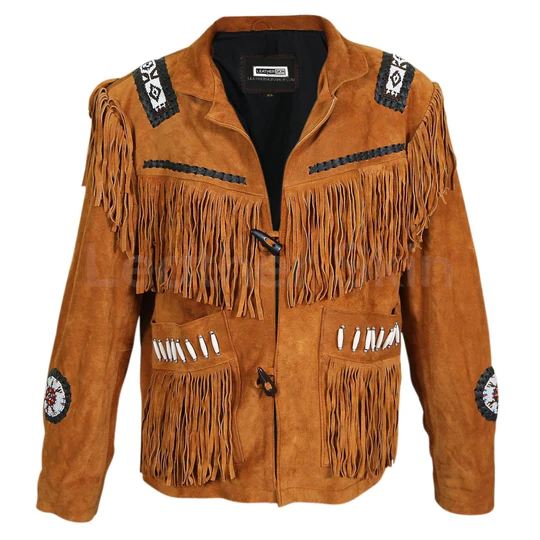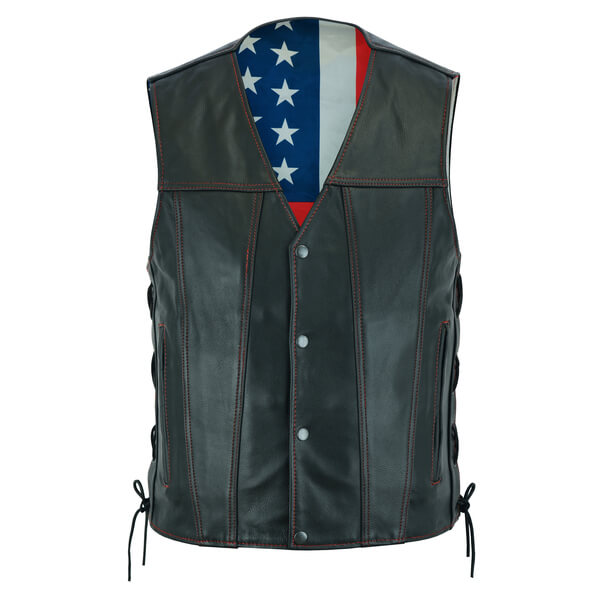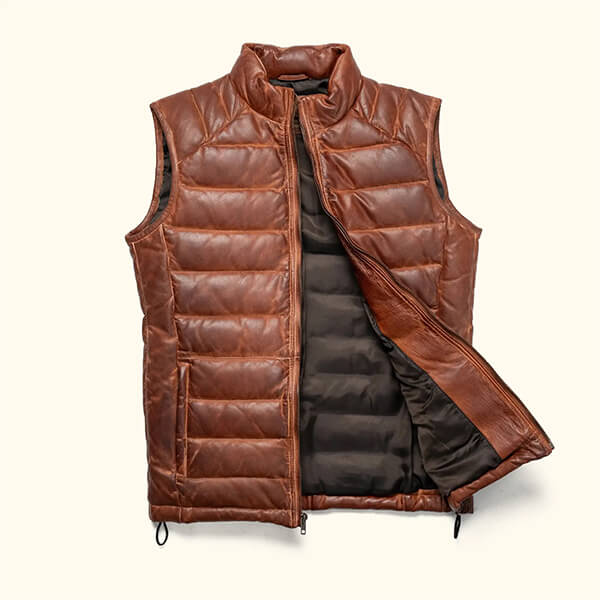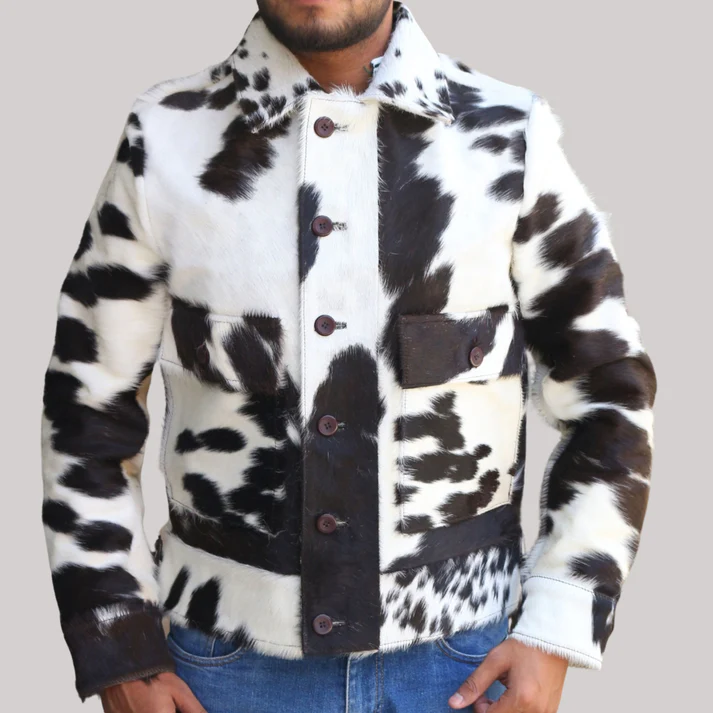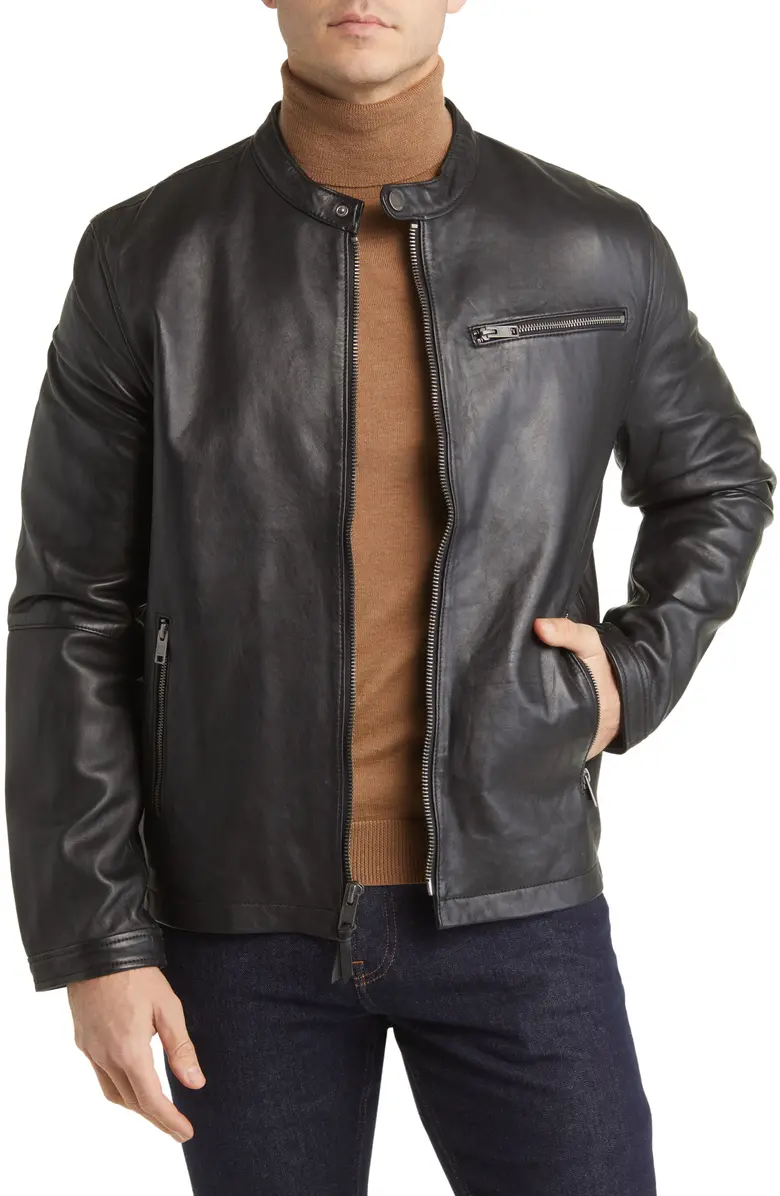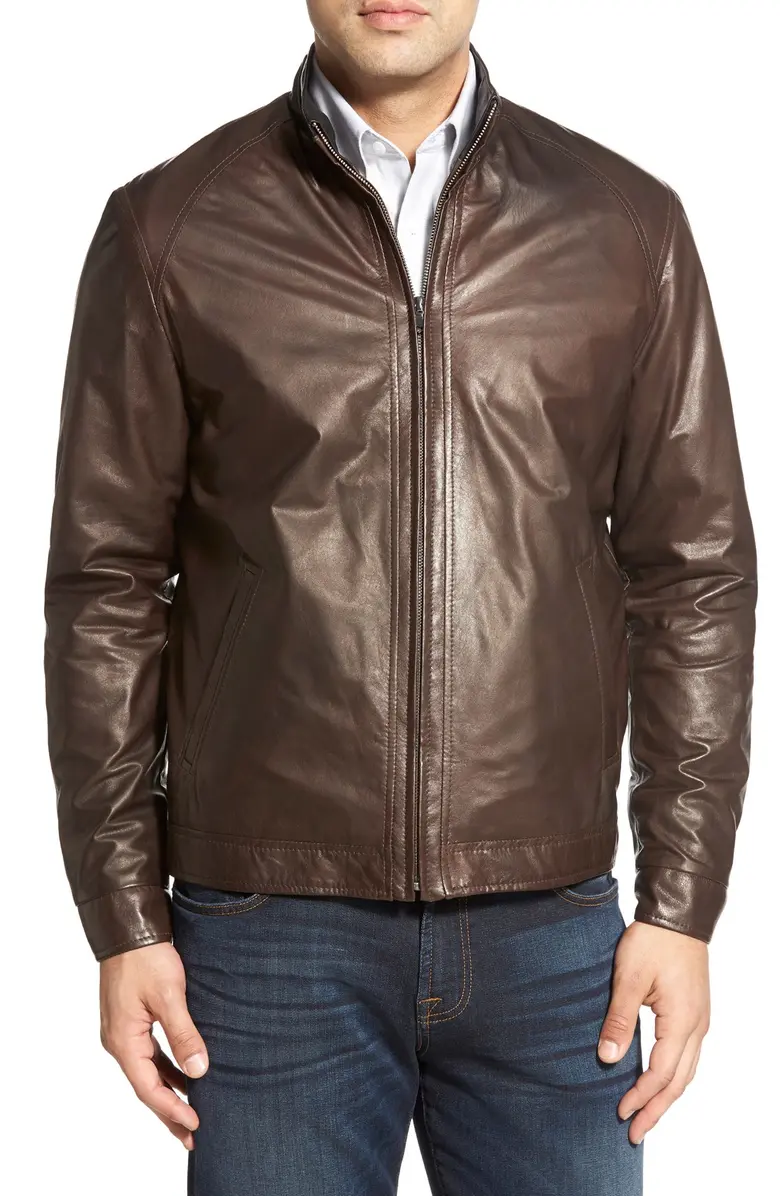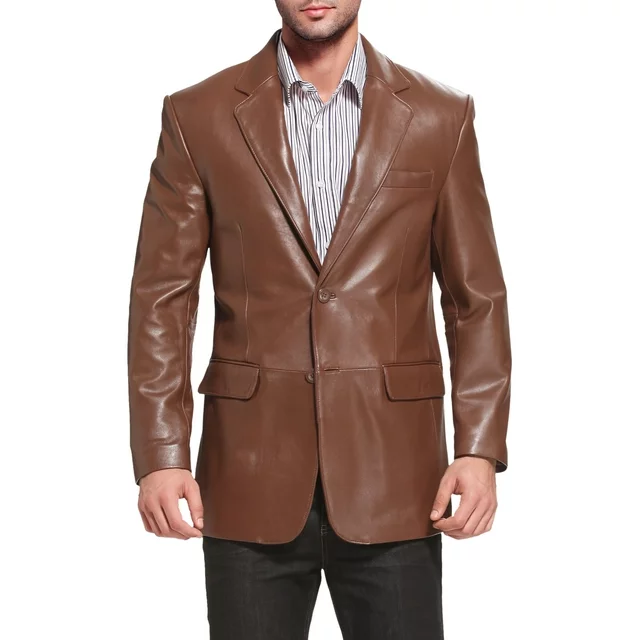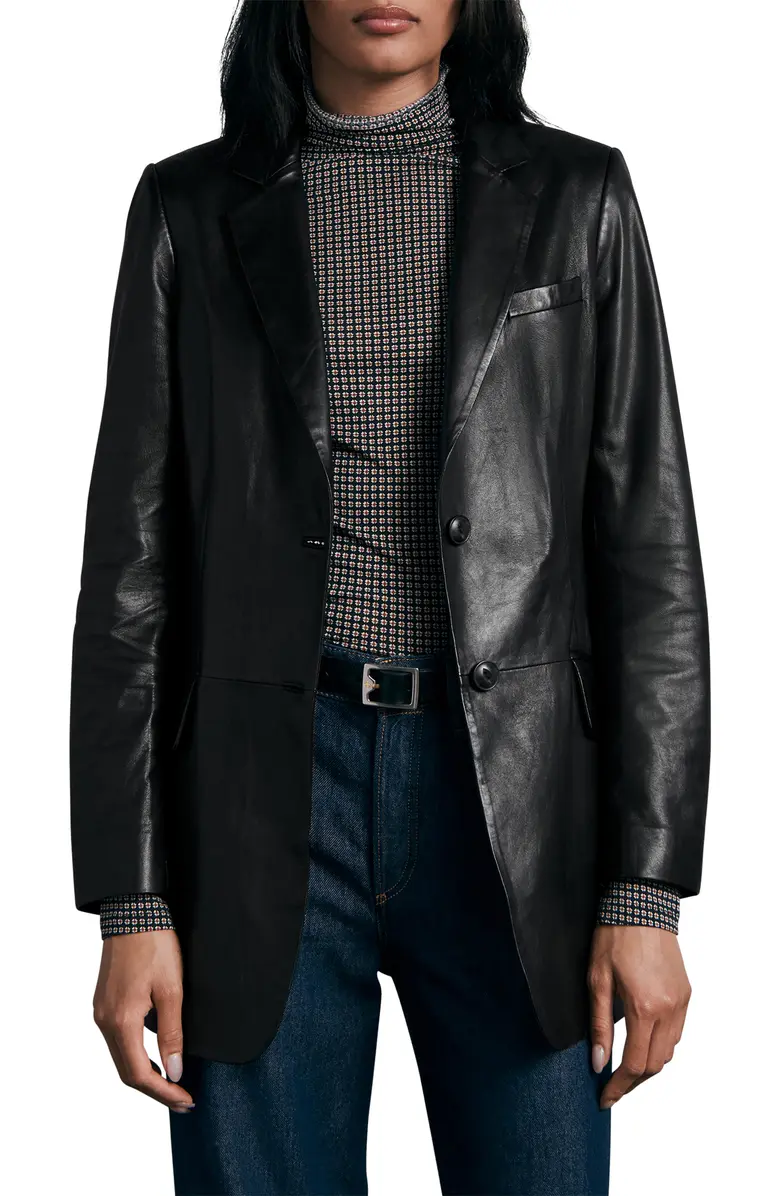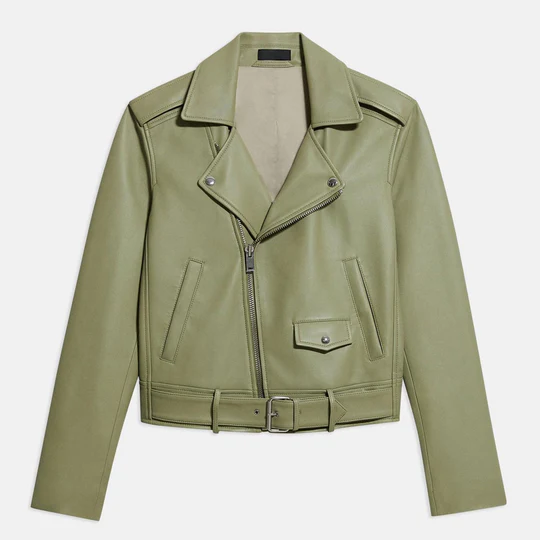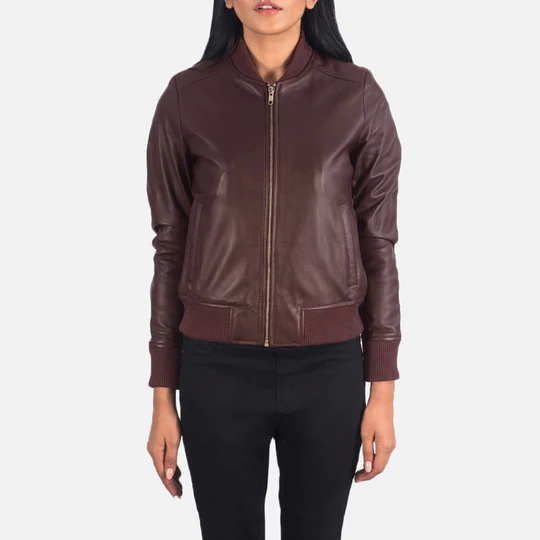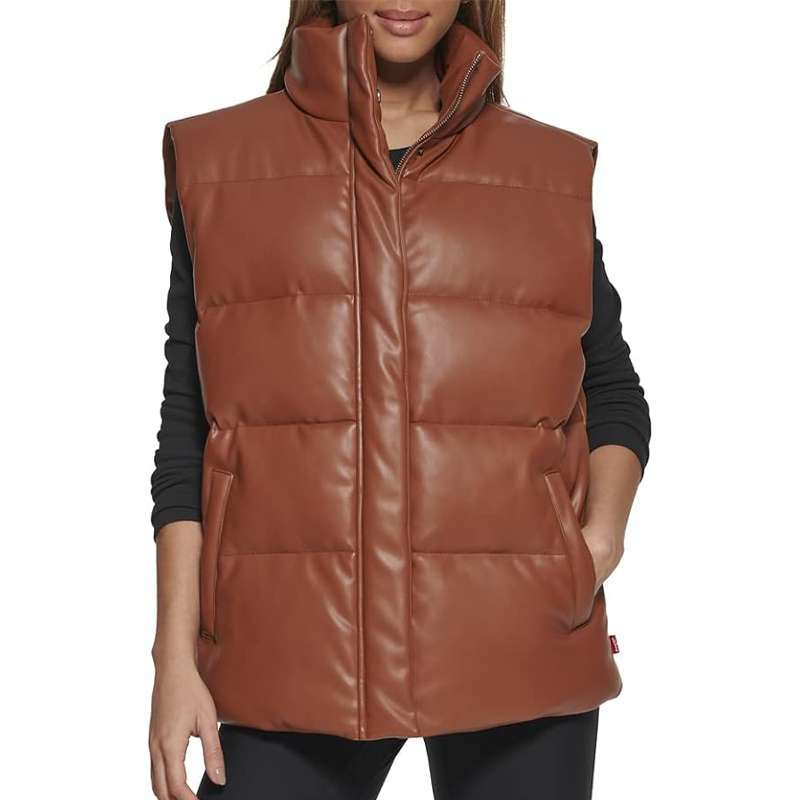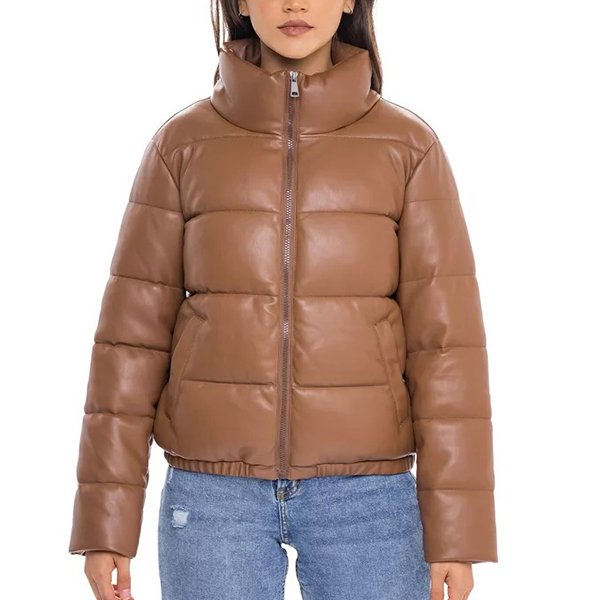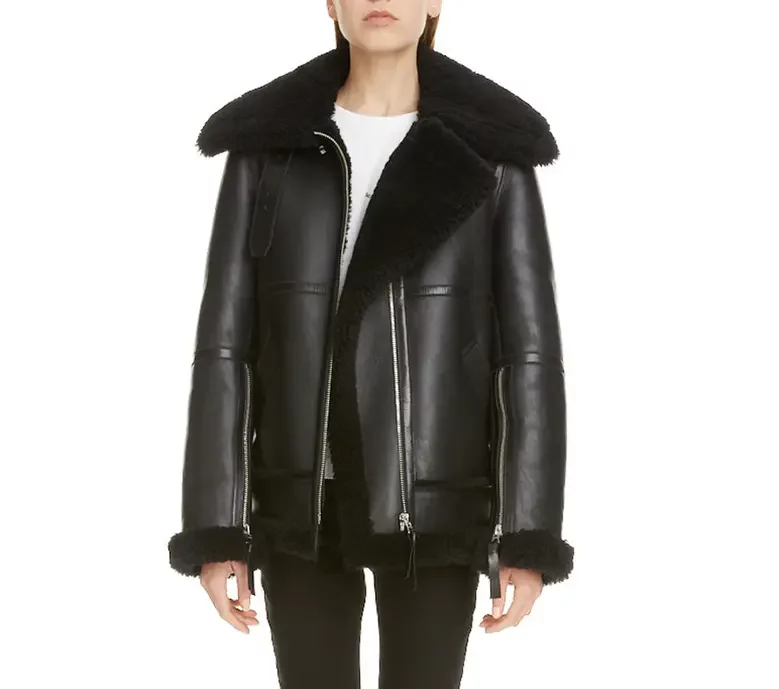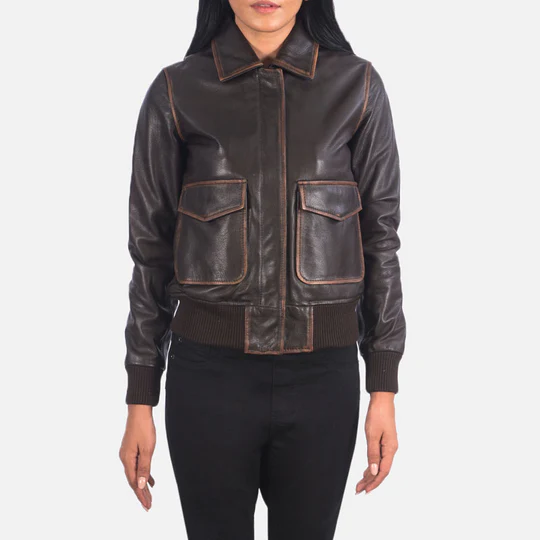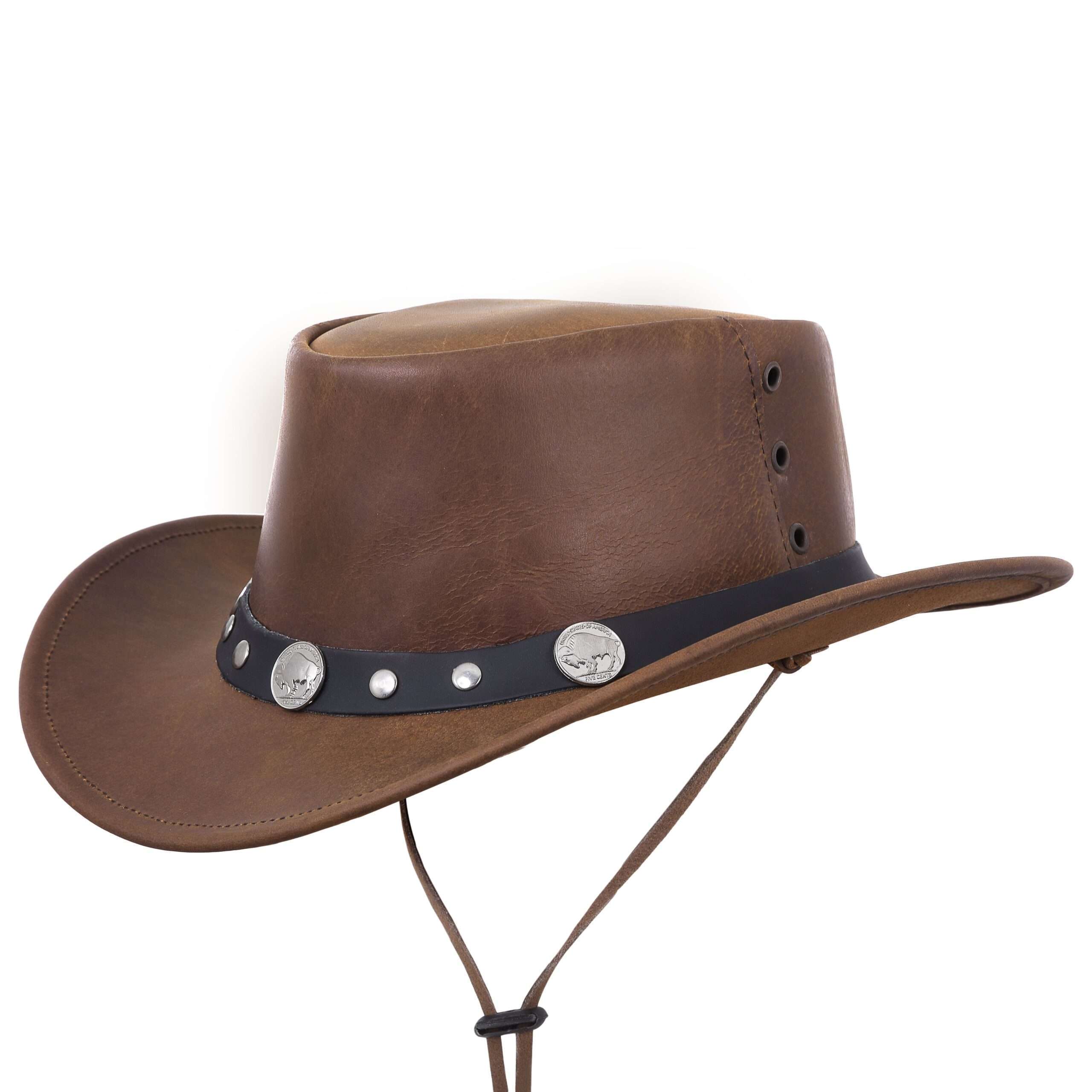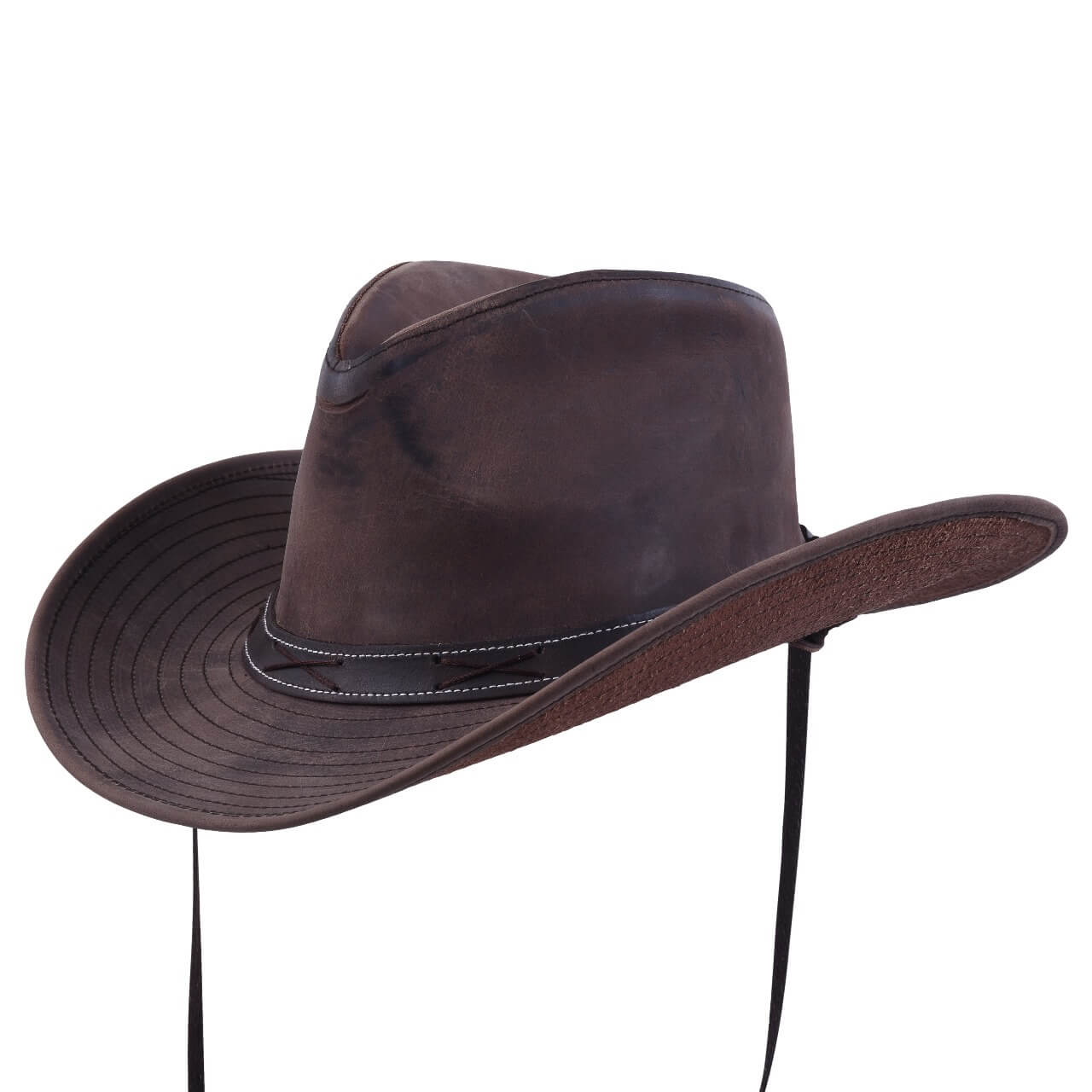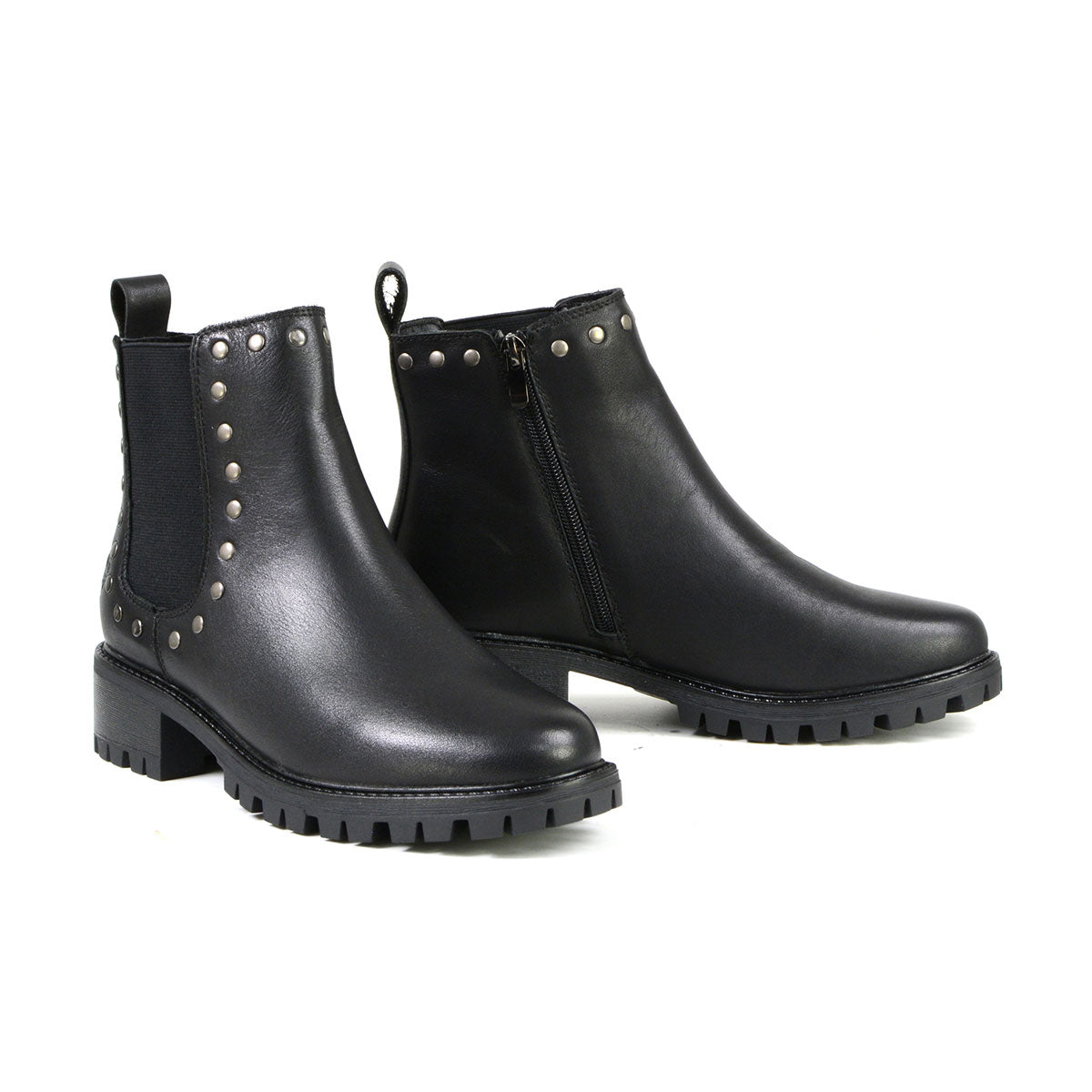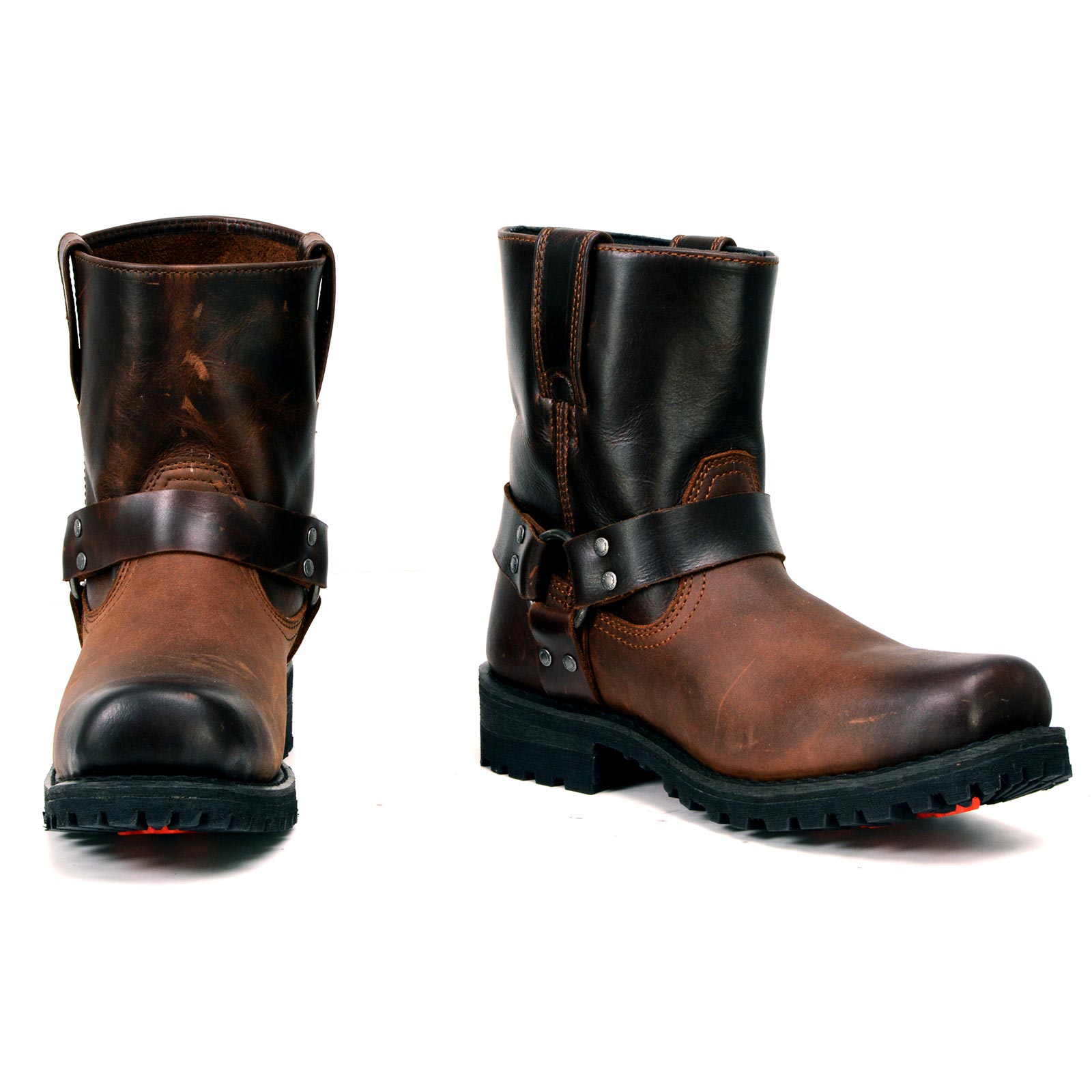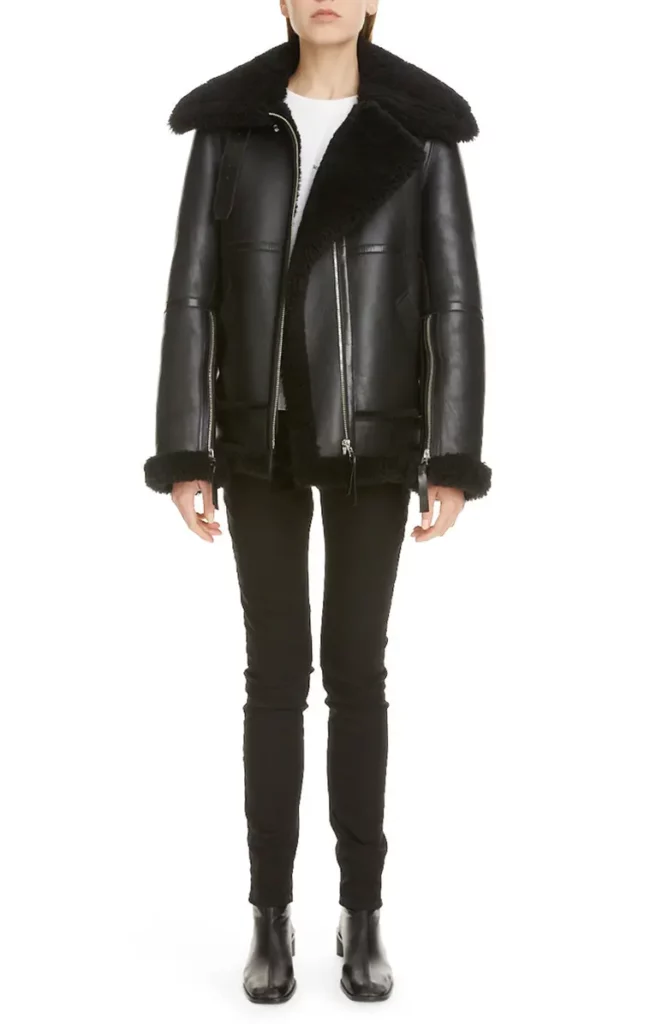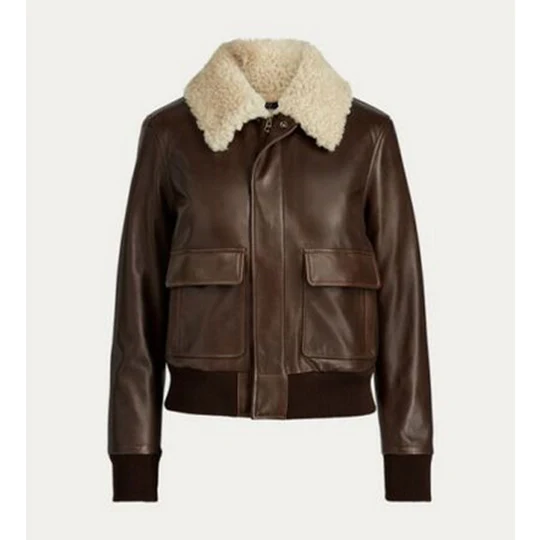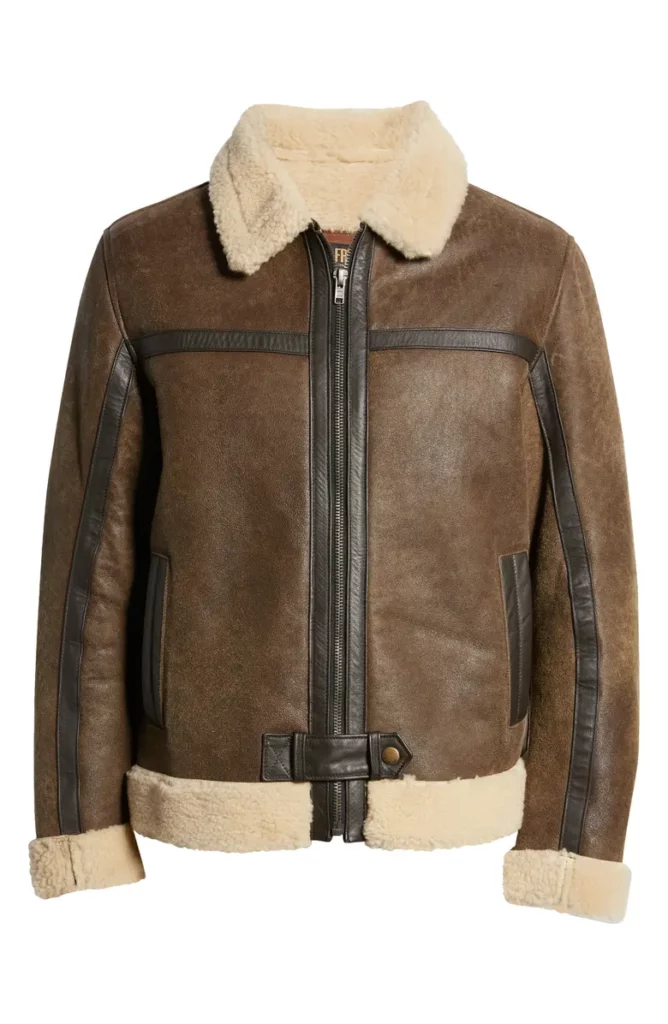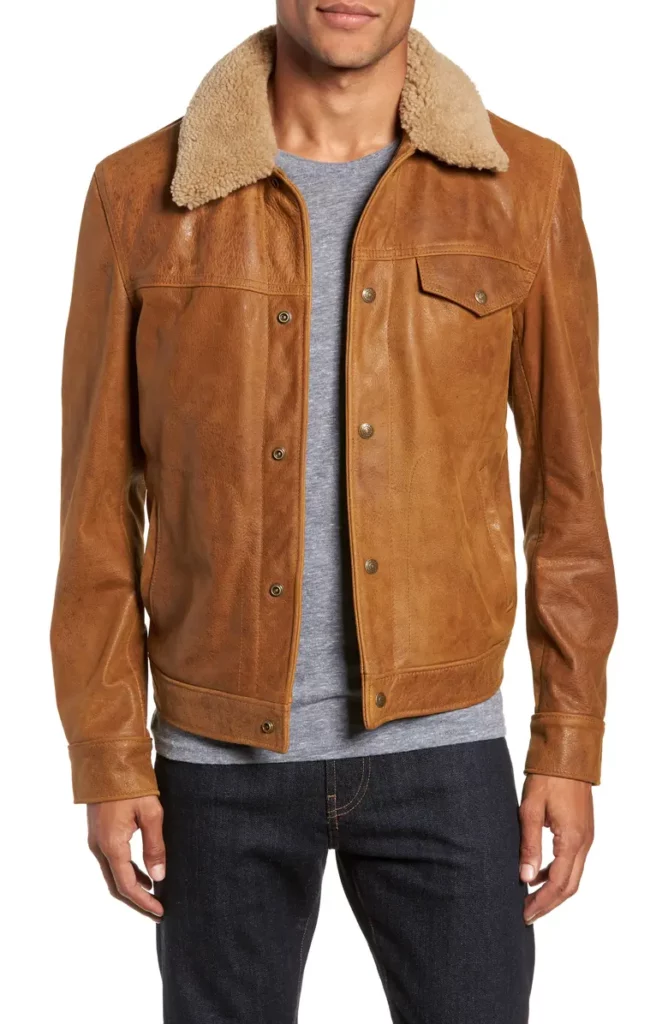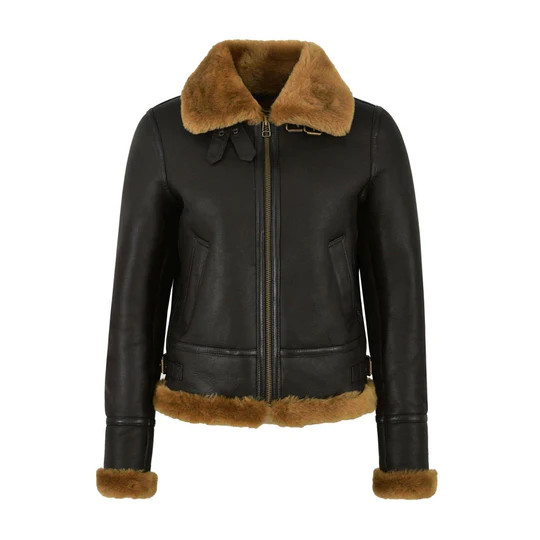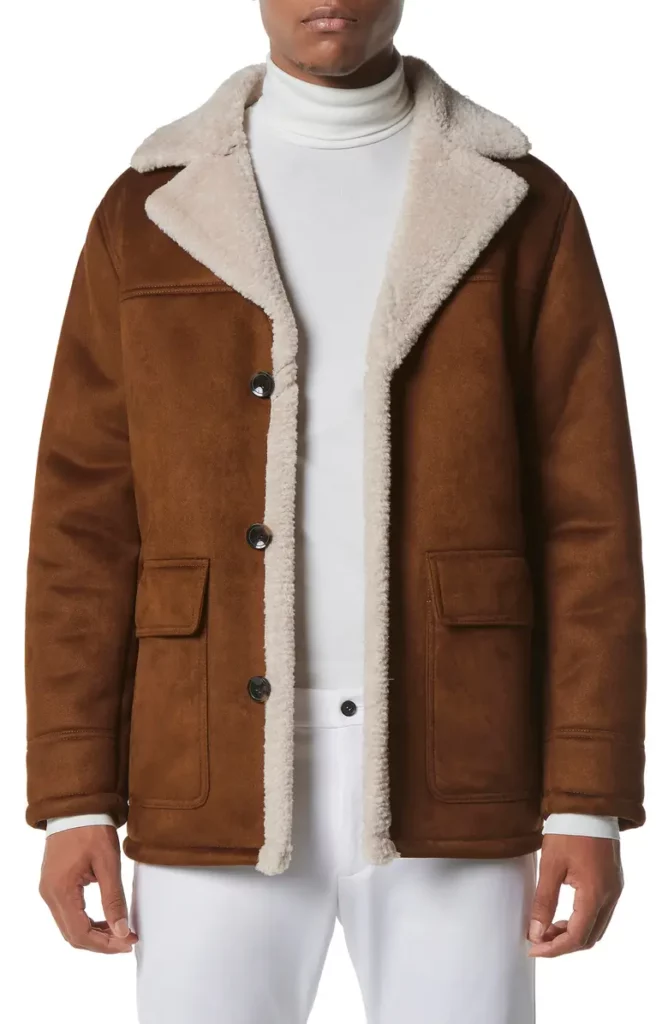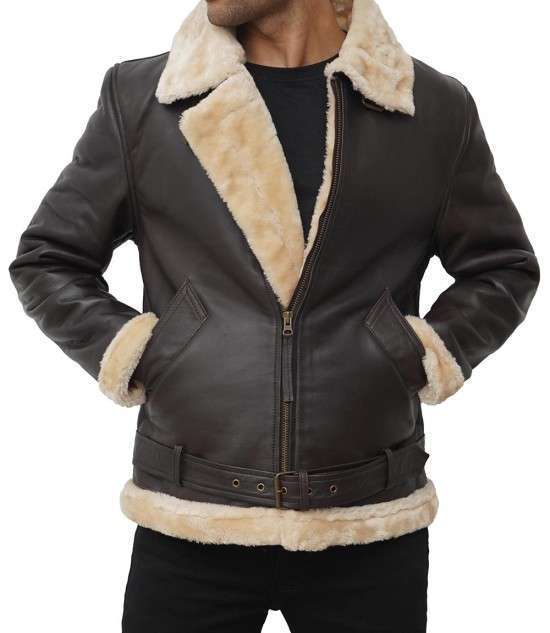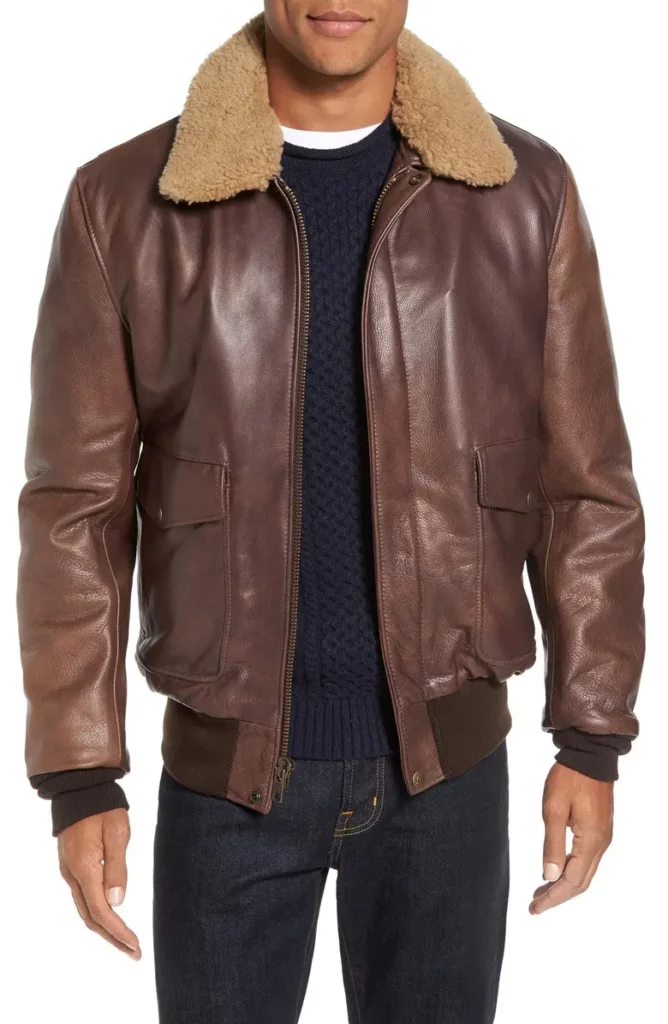Sherpa leather jackets have seen a resurgence in popularity due to their iconic look and undeniable comfort. Known for their plush lining and rugged materials, these jackets have become a fashion staple and functional layer in cooler months. This comprehensive guide will explore everything you need to know about sherpa jackets, from their distinctive features to the materials that make them both stylish and practical.
Understanding the Sherpa Jacket
What Is a Sherpa Jacket?
A sherpa jacket is a type of outerwear characterized by a soft, plush lining resembling the fleece from which it gets its name. Typically, sherpa refers to the synthetic lining inside the jacket, which is crafted to mimic the warm, woolly texture of actual sheep’s wool. Leather sherpa jackets come in various outer materials, but the common thread across all styles is their cozy interior, which provides both warmth and comfort. With a rugged yet approachable style, the sherpa jacket is ideal for both casual and semi-outdoor wear, making it a versatile addition to any wardrobe.
Black Aviator B-3 Sherpa Leather Jacket Women’s
Materials and Construction
One of the reasons sherpa jackets have such enduring appeal lies in their carefully chosen materials. They often feature sturdy outer fabrics that lend durability while keeping the elements at bay. Here are some common materials used in sherpa jackets:
- Sherpa Lining: Often made from polyester, sherpa lining replicates the look and feel of wool while being lighter and easier to care for. This faux-sheepskin material insulates well, making it ideal for chilly weather.
- Denim: Many sherpa jackets feature a denim exterior, combining the casual look of a denim jacket with the added warmth of sherpa lining. Denim sherpa jackets are versatile, stylish, and perfect for layering.
- Corduroy: Corduroy sherpa jackets are another popular choice, adding a layer of texture and style. The ribbed material adds warmth and pairs beautifully with the soft sherpa lining.
- Fleece: Fleece sherpa jackets offer an even cozier feel. Typically used in lightweight styles, fleece provides flexibility and comfort, making it a great choice for mild winter days.
The construction of sherpa jackets combines warmth with durability, ensuring the jacket stands up to repeated wear and provides consistent comfort.
Key Features: Warmth, Comfort, and Aesthetic
The appeal of the sherpa jacket goes beyond its materials; it’s about the unique blend of comfort, warmth, and a classic aesthetic. Here are some key features that make sherpa jackets popular:
- Warmth: The sherpa lining is excellent for trapping body heat, making these jackets highly effective in keeping you warm during cooler weather. Its thick, woolly texture acts as an insulator, perfect for fall and winter.
- Comfort: Sherpa lining is not only warm but also soft to the touch, adding a luxurious feel to the inside of the jacket. Unlike stiff outerwear, fur leather jackets provide a gentle and comfortable experience.
- Classic Look: Sherpa jackets have a timeless style that combines rustic charm with modern sensibility. They pair well with various outfits, from casual jeans and boots to more polished looks.
Brown Aviator Sherpa Leather Jacket Womens
Analyzing Spring Weather Conditions
Spring is a season marked by transition, with temperatures rising and weather patterns shifting unpredictably. This can create a unique set of challenges when it comes to dressing comfortably for the changing conditions. Here, we’ll delve into typical spring temperatures, common weather patterns, and how these factors impact clothing choices, including the suitability of sherpa jackets in spring.
Temperature Range and Variability in Spring
Spring temperatures can vary significantly depending on the region and even within a single day. In general, spring temperatures start cool, often lingering in the 50s Fahrenheit (10-15°C) in early spring, and gradually increase as the season progresses. By late spring, average temperatures can range from the 60s to 70s Fahrenheit (15-25°C) in many areas, with even warmer temperatures in some regions.
However, these averages hide a great deal of variability. For example:
- Northern regions may experience sudden cold snaps, making it necessary to layer with warmer clothing.
- Southern areas might have mild, comfortable temperatures, but can occasionally spike into the high 70s or 80s Fahrenheit (25-30°C), where lighter clothing is essential.
Such variability means that spring often requires a flexible wardrobe, with options for both chilly mornings and warm afternoons.
Sherpa Lined Genuine Leather Flight Bomber Aviator Jacket
Common Weather Patterns: Rain, Wind, and Sunshine
Spring weather patterns are famously unpredictable. A typical spring day might start with sunshine, shift to a rain shower by midday, and end with a cool, windy evening. Here’s how each element can influence clothing choices:
- Rain: Spring is one of the rainiest seasons in many areas. Frequent showers and the possibility of thunderstorms can create damp, chilly conditions, making water-resistant or layered clothing important.
- Wind: Breezy conditions are also common, especially in early spring. A jacket that can block the wind, like a sherpa jacket, can be highly useful on gusty days.
- Sunshine: While spring is often cloudy and wet, there are also bright, sunny days, especially as the season progresses. On warmer, sunny days, lightweight outerwear or a simple sweater may be sufficient.
This variety in weather makes it challenging to predict what to wear, but versatile outerwear, like a sherpa jacket, can sometimes bridge the gap between cool mornings and mild afternoons.
Is the Sherpa Jacket Suitable for Spring?
Sherpa aviator jackets are often associated with colder weather due to their warm, cozy lining. However, they can also be a stylish and practical choice for certain spring days, especially when temperatures are cooler, or weather patterns are unpredictable.
Pros of Wearing a Sherpa Jacket in Spring
There are several advantages to wearing a sherpa jacket in spring:
- Warmth on Cooler Days: In early spring, or on particularly chilly mornings, the sherpa lining provides warmth and insulation, making it a comfortable choice for brisk weather.
- Layering Potential: Sherpa jackets are great for layering, allowing you to wear a lightweight shirt or sweater underneath. If temperatures rise during the day, you can easily remove the jacket without feeling too warm.
- Versatile Style: Sherpa jackets have a classic look that pairs well with casual spring outfits, from jeans and boots to lighter spring sneakers. They add a rugged yet stylish element to any ensemble, perfect for transitional weather.
- Wind Protection: On windy spring days, a sherpa jacket offers more protection than lighter outerwear, helping to shield you from gusts and maintaining body warmth.
Cons of Wearing a Sherpa Jacket in Spring
While sherpa jackets have their advantages, there are also some potential drawbacks to consider during spring:
- Overheating on Warm Days: As spring progresses and temperatures rise, the insulating sherpa lining can make these jackets too warm for midday or late afternoon wear. This may lead to discomfort if worn on milder days.
- Limited Breathability: Sherpa jackets, especially those with denim or corduroy exteriors, may not be as breathable as lighter outerwear. This can make them less suitable on warmer days when airflow is needed to stay comfortable.
- Weight and Bulk: Sherpa jackets are bulkier than other spring outerwear options. For those looking for a lightweight jacket, sherpa may feel too heavy or cumbersome as temperatures increase.
Buffalo Leather Trucker Jacket w/ Sherpa Lined Collar
Comparing Sherpa Jackets with Other Spring Outerwear
When deciding on outerwear for spring, it can be helpful to compare the pros and cons of a sherpa jacket with other popular options, such as denim jackets, windbreakers, and trench coats.
Sherpa Jackets vs. Denim Jackets
Both sherpa and denim jackets have a casual, rugged appeal, but the denim jacket is generally lighter and more breathable. Denim jackets are perfect for mild spring days when warmth isn’t as necessary. Sherpa jackets, however, offer added insulation, making them ideal for colder spring mornings or evening outings.
Sherpa Jackets vs. Windbreakers
Windbreakers are designed for lightweight protection against wind and rain, making them a great choice for unpredictable spring weather. However, windbreakers typically lack the warmth that a sherpa jacket provides. For chillier days, the sherpa jacket is preferable, while windbreakers are better suited for warmer or wet conditions.
Sherpa Jackets vs. Trench Coats
A trench coat is a classic spring outerwear choice, particularly for wet weather, as many trench coats are water-resistant. Trench coats are usually lightweight and suitable for layering, offering a more polished look. While a sherpa jacket may be better for casual outings and cooler days, a trench coat offers more versatility for varied weather and semi-formal settings.
Women Oversized Black Leather Shearling Jacket
Styling Sherpa Jackets for Spring
The sherpa jacket can be a stylish and functional addition to any spring wardrobe. With the right colors, layering techniques, and pairing strategies, this classic piece can complement your spring outfits seamlessly. Here, we explore ways to style a sherpa jacket for spring, offering color suggestions, pairing advice, and layering tips to help you get the most out of this versatile outerwear.
Choosing the Right Colors for Spring
Color is a key factor in making your sherpa jacket feel seasonally appropriate. For spring, lighter and softer tones are popular choices, bringing a refreshing look that aligns with the season’s aesthetic. Here are some color recommendations to keep your sherpa jacket on-trend:
- Lighter Neutrals: Shades like beige, cream, light gray, and soft brown are perfect for spring. They add warmth without overpowering other colors in your outfit.
- Pastel Tones: Soft pastels such as blush pink, sky blue, and mint green are popular for spring and can add a subtle pop of color to your wardrobe.
- Muted Earth Tones: Sage green, dusty blue, and light taupe are versatile choices that pair well with other seasonal pieces, creating a natural, earthy vibe for spring.
These colors can give your sherpa jacket a fresh feel, making it easier to pair with lighter, spring-friendly clothing options.
Womens RAF B3 Bomber Flight Sherpa Leather Jacket
Pairing with Other Spring Wardrobe Essentials
When styling a sherpa jacket, consider pairing it with complementary pieces to create a cohesive spring look. Here are some ideas for pairing a sherpa jacket with spring wardrobe essentials:
- Jeans: A classic pairing, jeans are a great match for sherpa jackets. Opt for light-wash denim for a softer, more spring-like feel, or go with a slim fit to balance out the bulk of the jacket.
- Skirts: Sherpa jackets can add a cozy contrast to skirts, especially midi or maxi lengths. A flowy skirt in a soft pastel or floral pattern pairs beautifully with the rugged texture of the sherpa jacket.
- Lightweight Pants: Chinos or linen pants in neutral tones work well with sherpa jackets. These lightweight options create a comfortable outfit without feeling too warm.
Experimenting with different combinations allows you to adapt your sherpa jacket for a variety of spring occasions, from casual outings to semi-dressy events.
Men’s Brown Suede Leather Sherpa Lined Coat
Layering Tips for Optimal Comfort
Spring weather can fluctuate throughout the day, making layering an essential styling technique. Here are some tips for layering with a sherpa jacket to stay comfortable and stylish:
- Underlayer Basics: Wear a breathable base layer, such as a cotton T-shirt or a lightweight sweater, underneath the sherpa lined leather jacket. This allows you to adjust your outfit as temperatures change.
- Outer Layer Options: On colder days, you can layer a light scarf or even a thin vest over your sherpa jacket for added warmth. A scarf adds texture and warmth without adding too much bulk.
- Balanced Layering: Given that sherpa jackets are bulkier, balance your outfit with fitted bottoms, like slim jeans or leggings, to create a streamlined look.
Layering with these tips can help you adapt to spring’s unpredictable temperatures while keeping your outfit stylish.
Practical Considerations
When incorporating a sherpa jacket into your spring wardrobe, it’s essential to consider practical aspects like temperature thresholds, managing moisture, and caring for the jacket between uses. Here are some helpful guidelines.
Dark Brown Sherpa Leather Bomber Jacket Men’s
Determining When It’s Too Warm for Sherpa
Sherpa jackets provide excellent warmth, but they can become uncomfortable on particularly warm spring days. Here’s how to gauge whether a sherpa jacket is suitable for the temperature:
- Temperature Threshold: Generally, if temperatures reach above 60°F (15°C), a sherpa jacket may become too warm. On such days, consider switching to a lighter jacket or layering with a sweater instead.
- Comfort Tips: Pay attention to humidity as well; higher humidity can make a sherpa jacket feel even warmer. If temperatures fluctuate, consider carrying a lighter alternative that you can swap out if it gets too warm.
Monitoring the temperature and humidity will help you choose the most comfortable times to wear your sherpa jacket in spring.
Managing Moisture and Rain
Sherpa jackets are not typically water-resistant, so extra care is needed on rainy days. Here’s how to keep your jacket in good condition:
- Avoid Direct Exposure: If rain is in the forecast, consider wearing a water-resistant layer over your sherpa jacket. A lightweight rain jacket or poncho can provide a protective barrier without adding much bulk.
- Use Water-Repellent Spray: Some water-repellent sprays are safe for both denim and sherpa materials. Applying a light coat can help protect your jacket from moisture and stains, though it’s best to test on a small area first.
Taking precautions can help keep your sherpa jacket dry and in good shape, even during spring showers.
Cowhide Bomber Jacket with Genuine Shearling Collar
Storing and Cleaning Between Uses
Proper cleaning and storage will help maintain the quality of your sherpa jacket, especially when it’s not in daily use. Here are some tips:
- Spot Clean: Sherpa linings can be difficult to clean, so it’s best to spot clean any stains with a mild detergent and water. Avoid fully immersing the jacket, as it can damage the materials.
- Air Dry: If the jacket becomes damp, allow it to air dry fully before storing it. Avoid using a dryer, as the heat can affect the texture and structure of the sherpa lining.
- Store in a Cool, Dry Place: When not wearing your sherpa jacket, store it in a cool, dry closet to prevent any mustiness or dampness. Hanging it on a sturdy hanger can also help maintain its shape.
Following these steps will ensure your sherpa jacket stays fresh and ready for the next time you need it during unpredictable spring weather.
Where to Buy Spring-Appropriate Sherpa Jackets
Finding a spring-ready sherpa jacket can be easier with the right shopping sources. Look for retailers and brands that offer seasonally tailored designs:
- Outdoor and Activewear Brands: Brands like Patagonia, Columbia, and The North Face often provide lightweight, versatile sherpa jackets suitable for spring. These options are typically designed with breathable fabrics and weather-resistant features.
- Fast Fashion Retailers: Stores like H&M, Zara, and Uniqlo offer trendy, budget-friendly options, including lightweight sherpa jackets in spring-friendly colors and styles.
- Online Marketplaces: Sites like Amazon and ASOS have a broad selection of sherpa jackets, making it easy to filter by material and lining thickness to find a spring-appropriate option.
Choosing the right retailer and paying attention to product descriptions can help you find a sherpa jacket that fits the season’s needs while adding a stylish touch to your spring wardrobe.
Conclusion
Sherpa jackets can be a stylish and functional choice for spring, offering comfort and warmth on cooler days. By selecting lighter materials, spring-friendly colors, and layering thoughtfully, you can make the sherpa jacket work for various spring conditions. For milder days, consider lighter alternatives like fleece or bomber jackets. With proper care and mindful styling, a sherpa jacket can be a versatile and fashionable addition to your spring wardrobe.
FAQs
- Can you wear a sherpa jacket in spring?
Yes, it’s great for cooler spring days, especially if you choose a lighter or breathable version. - How should I style a sherpa jacket for spring?
Pair it with light layers, like a T-shirt and jeans, and choose spring-friendly colors like pastels or neutrals. - Are there lighter versions of sherpa jackets?
Yes, lightweight sherpa and fleece options are ideal for milder spring temperatures. - How can I protect my sherpa jacket from rain?
Use a water-resistant outer layer or a water-repellent spray to protect it from moisture. - What are good alternatives to sherpa jackets for spring?
Consider fleece jackets, bomber jackets, or light trench coats for a similar look with less warmth.
